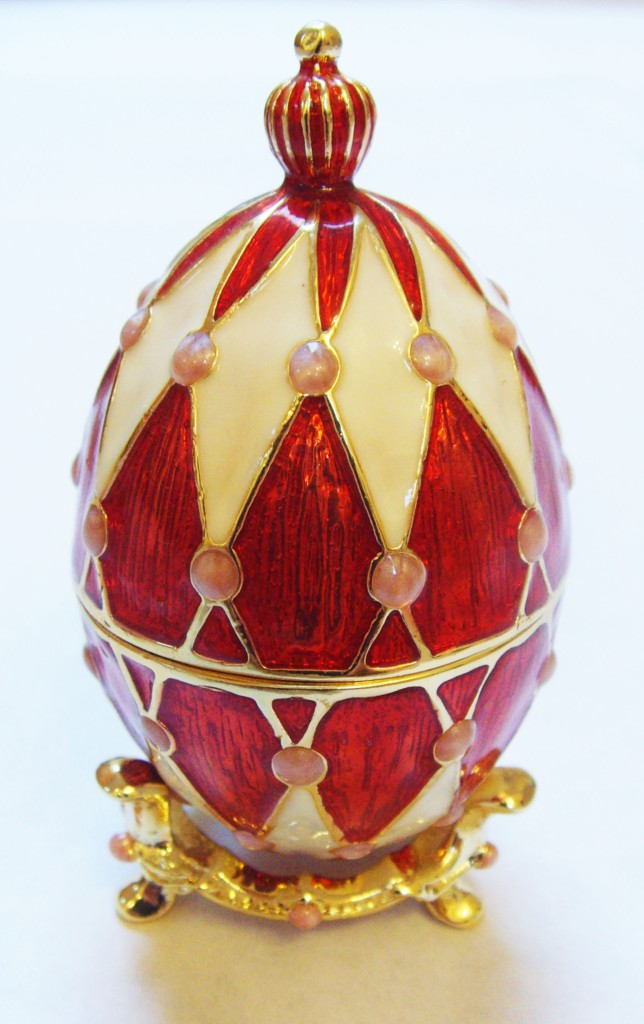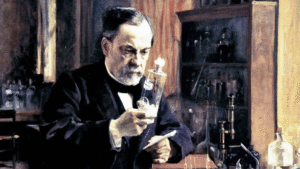The House of Fabergé was one of Russias most famous royal jewellers. It was founded by Gustav Fabergé in 1842 in St. Petersburg, Russia. One of their most famous products were the Fabergé Easter eggs that were created for the Tsars to give as presents to their wives. These jewel, studded eggs were the produced by the founders son, Peter Carl Fabergé. The story is told that before Easter of 1885, Alexander III’s brother Grand Duke Vladimir Alexandrovich suggested that Peter Carl Fabergé create a jewelled egg. This type of egg is believed to have been inspired by an ivory hen egg made for the Danish Royal Collection in the 18th century. The Fabergé egg was known as the Hen Egg, it has a 2.5 inch outer enamel shell and a golden band around the middle. The egg opens to reveal a golden “yolk” within, which opened to reveal a golden hen sitting on golden straw. Inside the hen lay a miniature diamond replica of the Imperial crown and a ruby pendant, though these two elements have been lost. It was given to the tsarina on 1 May 1885. The egg cost 4,151 rubles, a modest price, although in 1994 one of the eggs was bought by an American business man for $5.5 million dollars! Maria was so delighted by the gift that Alexander appointed Fabergé as “goldsmith by special appointment to the Imperial Crown” and commissioned another egg the next year. After that, Peter Carl Fabergé was apparently given complete freedom to design future imperial Easter eggs, and their designs became more elaborate. According to Fabergé family lore, not even the Tsar knew what form they would take—the only requirements were that each contain a surprise, and that each be unique. Once Fabergé had approved an initial design, the work was carried out by a team of craftsmen, among them Michael Perkhin, Henrik Wigström, and Erik August Kollin. After Alexander III’s death on 1 November 1894, his son, Nicholas II, presented a Fabergé egg to both his wife, Alexandra Fedorovna, and his mother, the Dowager Empress Maria Fedorovna. Records have shown that of the 50 imperial Easter eggs, 20 were given to the former and 30 to the latter. The imperial eggs enjoyed great fame. Fabergé was commissioned to make similar eggs for a few private clients, including the Duchess of Marlborough, the Rothschild family, the industrialist Alexander Kelch, and the Yusupovs.
The Christian tradition of giving eggs at Easter dates back to the reign of King Edward 1 of England in the 12th and 13th centuries. The eggs were normally colourfully decorated, sometimes dyed using vegetables such as beetroot for a red colour representing the blood of Christ, or spinach for a green colour representing new beginnings. Hard boiled eggs were used in the game of rolling the eggs down the hill. The winner is the egg that rolls the furtherest without breaking, still played in the USA White House lawn each Easter Monday. The tradition teaches that the egg represents the resurrection of the humanity of Christ from the grave, the new beginning for him. It symbolises the rolling away of the stone that covered the entrance of his tomb which showed that the grave was empty, that he had risen from the dead. In Matthew’s gospel it says “He is not here: for he is risen, as he said. Come, see the place where the Lord lay.” The verse explains the reason why the stone was rolled away, to prove that the tomb was empty. That Christ had risen is a pivotal truth in Christianity for it shows that one day his followers will rise also just like their Saviour.
P. Pilgrim pilgrimway101@yahoo.com




